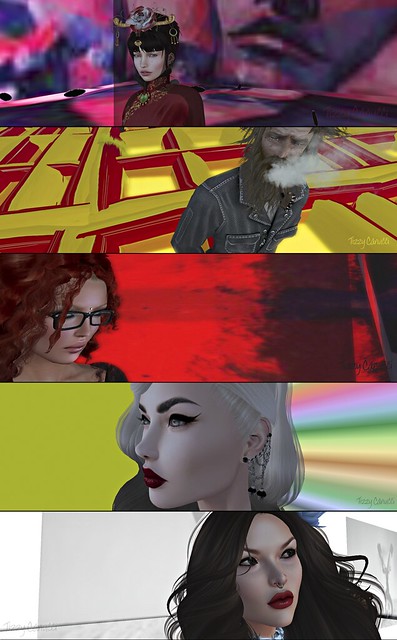I started this piece of writing two years ago when I decided to complete revamp an avatar. I didn’t really have the time to make those changes, but I felt a compulsion for change, which I thought was about to rework wider ideas of my identity. I’d been thinking about the ideas around this for several years, and so I was kind of watching myself and wondering as I did it. My sociological curiosity.
There may be things about our lives that are fixed and definitive, but they are just points on our life line. We are constantly in the process of developing and writing our life stories around those fixed points. However, we only realise the significance of events in the context of things that happen later; our histories are written retrospectively and those fixed may not be as definitive as we think they are1. We are constantly involved in selectively deploying aspects of our lives, narrators of our own life stories that are never complete and constantly changing in emphasis. We would never bore anyone in real life with a blow-by-blow description of everything we have done, or of everything we think we are. We give partial histories, not complete truths, which is appropriate to the situation in which we are telling it; and they are no less honest for that. Avatars could never be a complete truth either.

If we retell our real lives as partial, selective and incomplete stories, it is hardly surprising that our existence in virtual worlds are no more complete. Avatars cannot be literally ourselves; they are reflections and representations. They are re-embodiments of aspects of ourselves; a reconfiguration. We pull out a few threads of who we are, around which we weave a new pattern; maybe a younger self, a re-gendered self or a creature not of human form, but it is inevitably a reconfigured self. Avatars are never entirely fantasy selves; our fantasies come from within us, a combination of our experiences, real lives and our imaginations. Even complete escapism comes from a desire to get away from the experience of our reality. Avatars may be utterly different in appearance or quite similar, but the question of physical ‘honesty’ is irrelevant. They are inevitably drawn out of our creative and imaginative selves, and whatever we create is a reflection of what want, could or can make.
Time is important. Works are created in the present and viewed in the present, but those two ‘present’ points in time are not the same, and the processes of creation and viewing circle around each other in time. That mutual orbiting lends perspective to the process, a sense of direction or a trajectory, from the past to future. Our creative works speak back to us, reshaping both our world view and our view of ourselves, as we shape them. It is only in looking back that a perception of change occurs, and it’s significance.
- Louis Malle felt he could only have made his autobiographical film Au Revoir, Les Enfants (Louis Malle, 1987) 25 years after the events as “there are certain distortions, almost as if my imagination… had fertilised my memory. Memory is not frozen, it’s very much alive, it moves, it changes” French, P. (ed.) (1993). Malle on Malle. London: Faber & Faber. p.167.

2 thoughts on “We are What we Create, and We Create Who We are”